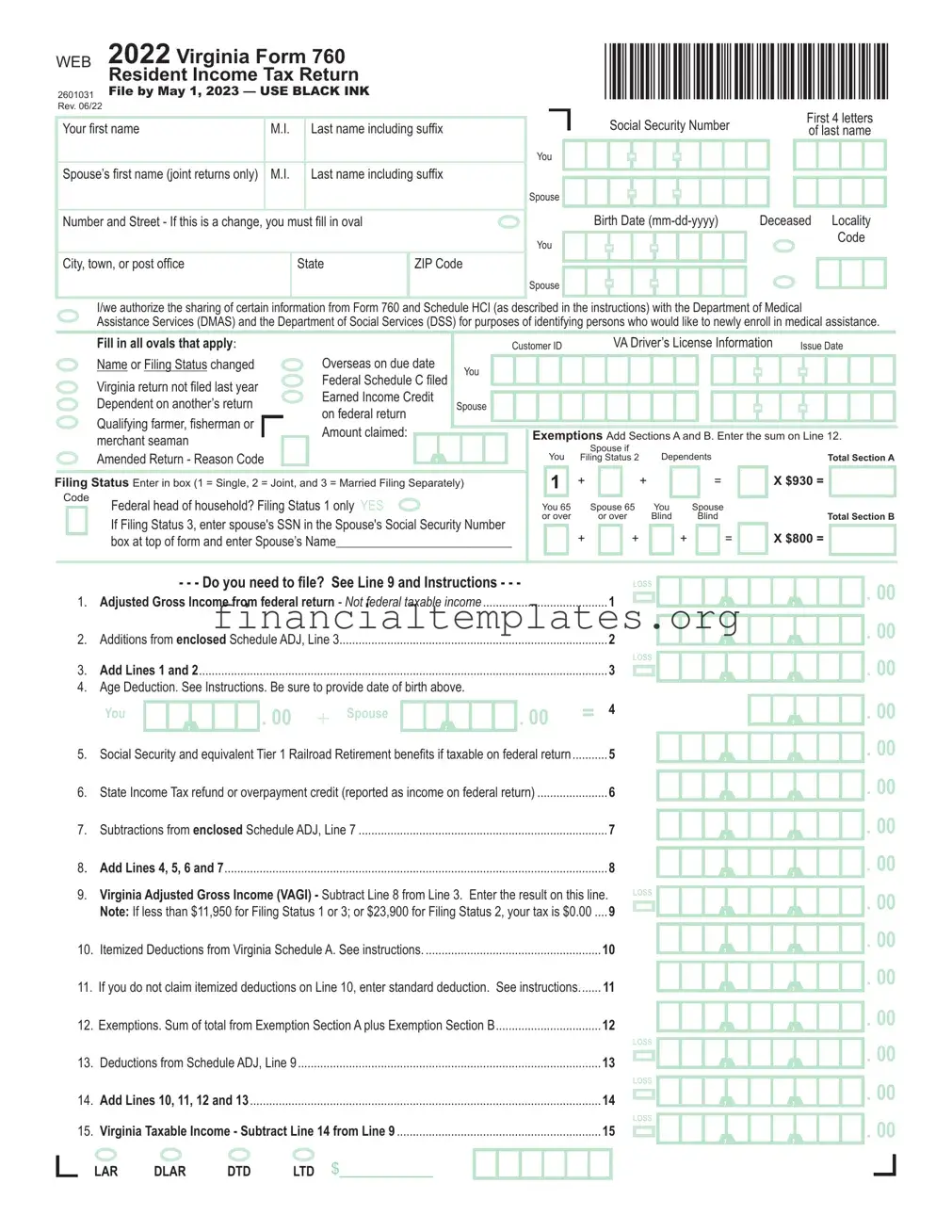The IRS Form 1040, U.S. Individual Income Tax Return, shares notable similarities with the Virginia State Tax Return Form 760. Both forms collect comprehensive personal and financial information to determine the amount of tax owed to the government. This includes income details, deductions, credits, and personal exemptions. The structure and purpose align closely, offering a federal and state-level view on taxpayers' obligations.
Form 760ES, Virginia Estimated Income Tax Payment Vouchers, is akin to Form 760 in that it deals with income tax within Virginia but is used for estimating and paying taxes on income not subject to withholding. This includes earnings from self-employment, interest, dividends, and other sources. Both forms require an understanding of one’s income and tax rates to correctly calculate the tax due.
The Schedule ADJ (Virginia Schedule of Adjustments) works directly with Form 760 to adjust gross income through deductions and additions specific to Virginia’s tax laws. It mirrors the relationship between the federal Schedule A (Itemized Deductions) and Form 1040, where taxpayers can itemize deductions to lower taxable income, thus affecting the final tax calculation on the main return form.
The Virginia Schedule CR (Credits) that supplements Form 760 is similar to the various federal tax credit forms, such as Form 8863 for Education Credits or Form 5695 for Residential Energy Credits. Both sets of forms allow taxpayers to claim credits for certain qualified expenses, which can directly reduce the amount of tax owed rather than just taxable income.
Form 760PMT, Payment Voucher for Previously Filed Individual Income Tax Returns, is designed for submitting payments after filing Form 760 if taxes are owed. This parallels the IRS Form 1040-V (Payment Voucher), utilized when mailing payments for taxes due on the federal return. Both serve as a mechanism for facilitating tax payments separate from the initial return filing.
The Schedule OSC (Credit for Tax Paid to Another State) is a companion to Form 760 for taxpayers who need to account for taxes paid to other states. This form mirrors the concept of the federal Foreign Tax Credit, though the latter applies to taxes paid to foreign governments. The underlying principle is to prevent double taxation on the same income.
Virginia Form 763, Nonresident Individual Income Tax Return, shares a core purpose with Form 760 but is specifically tailored to nonresidents who have income sourced from Virginia. This form closely relates to the federal Form 1040NR, U.S. Nonresident Alien Income Tax Return, which serves nonresidents with U.S. sourced income. Despite the different target demographic, both forms address state and federal tax requirements for nonresident income.


